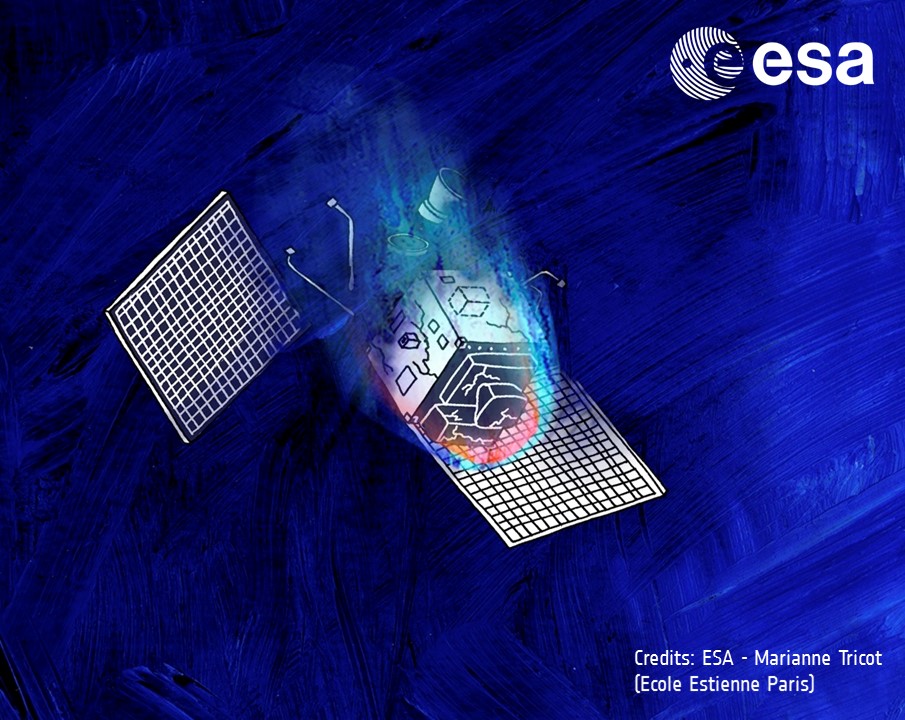Sharing is caring: that goes for the space industry too – especially when it comes to tackling the common problem of orbit debris.

Working on innovative solutions to make future satellites compliant with space debris mitigation, ESA’s Clean Space initiative has pursued a coordinated approach from the very start, sharing know-how with European companies and internal ESA partners.
Communication and sharing with European industry has been put in place through innovative contractual frames such as CleanSat, where the three European Large Satellite Integrators are co-priming 28 studies on technology developments for space debris mitigation. The interaction within ESA meanwhile has to go through other, more conventional, channels.
‘’As a primary user of Low Earth Orbits – the region most impacted by space debris – ESA’s Earth Observation Directorate (EOP) is a natural Clean Space partner’’ says Antonio Gabriele, a Moltek system engineer working for the Earth Observation Directorate. A close, ongoing dialogue has therefore been established with the Directorate, aiming to share information on CleanSat technological developments and receiving valuable feedback from their future users.
No-one wants to develop something nobody is going to use after all, do they?
The cooperation between CleanSpace and EOP is implemented at different levels. A constant exchange of information is in place with the future mission division of EOP, actively involved in the frame of CleanSat, with representatives assigned to the initiative. Space debris mitigation requirements are now included in all the system requirement documents of future EOP missions, and the verification of compliance with such requirements has become a fundamental step of project reviews. One of the solutions identified in a system study on ‘Design for Demise’ is likely to be implemented on one of the future Sentinel missions. As future spacecraft platforms for LEO missions are being developed with, space debris mitigation requirements are being prioritised.

A satellite re-enters the atmosphere and starts melting
Credits: ESA – Marianne Tricot (Ecole Estienne Paris)
In order to reinforce and expand such cooperation regular meetings between CleanSpace and EOP have also been set up. The last one was held in ESTEC on 18 November 2016. The goal of the meeting was to present of all the current technology activities on space debris mitigation plus all relevant development roadmaps..
The participation of representatives of different EOP missions project teams, of the EOP future mission division, and of technology experts from the TEC directorate contributed to make the meeting successful beyond expectations.
Users had the chance to learn about the full variety and complexity of issues being tackled, the depth of investigation involved and gain insight into when these solutions will be available.
The first feedback these representatives have provided is that debris mitigation requirements are taken very seriously. Most of future missions will embark a large quantity of propellant to ensure that satellites can be safely de-orbited at their end of life. At the same time, to ensure that the casualty risk on Earth is below the required value (1 in 10000) large satellites need controlled re-entry manoeuvres. All of this comes with significant penalties in terms of mass, design complexity and cost. Any technologies which will allow a decrease of such penalties are highly appreciated.
Thanks to their hands-on expertise in project teams the representatives offer valuable feedback to current debris mitigation studies, commenting on proposed solutions from the perspective of satellite integration and in-orbit performance – which should not be impacted negatively.
At the same time the CleanSpace team had the chance to raise awareness on their current activities, settle some common misconceptions about regulations and illustrate the approach being pursued to develop a future generation of satellites compliant with space debris mitigation requirements.
Debris mitigation can potentially pose major constraints on the satellite design and the overall mission cost. The clear message that emerged from this open forum is that users’ have an intense interest in space debris mitigation technologies, as their prompt implementation will bring the obvious advantage of cost reduction and full requirements compliance for future missions.
This strong cooperation between CleanSpace and EOP will continue into this year and beyond.
This agile approach will minimise cost and risks and ensure timely response to any necessary actions: a win-win situation nobody wants to stop.





Discussion: no comments